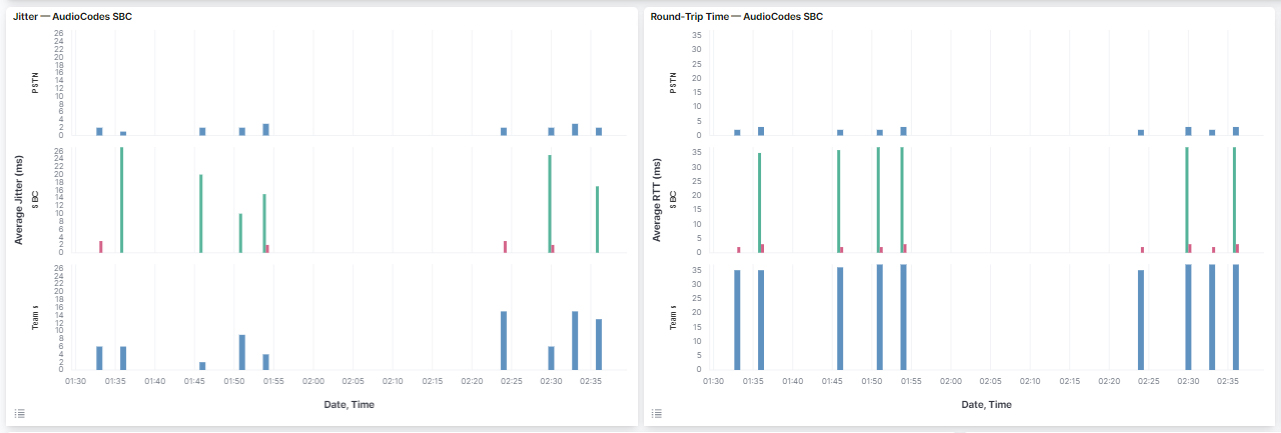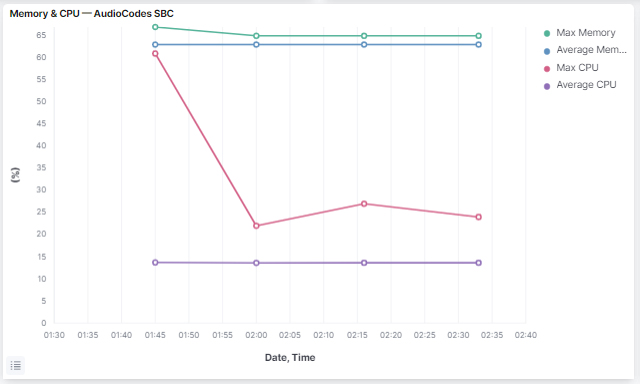AudioCodes SBC for Microsoft Teams Direct Routing
Microsoft Teams Monitoring
Microsoft Teams Phone has reached about 12 million users, with many Enterprises now in the process of considering and then deploying this functionality that comes with their E5 subscription.
Moving to Teams Phone involves important changes in the IT and UC environment but enables a seamless experience for business lines reliant on Microsoft services. However, managing Teams Phone service quality now requires the Microsoft 365 and the UC teams to work together and to have an end-to-end view of the entire service.
That is the difficult part.
At the heart of the Teams PSTN call is the Session Border Controller (SBC) that manages security, routing policy, numbering plans and voice codec. AudioCodes is the leader of this technology and Martello just released a new AudioCodes SBC integration, which bridges the visibility gap that both the UC and Microsoft 365 teams might have when trying to ensure Microsoft Teams Phone service quality for their end user. Martello Vantage DX now collects performance metrics from every call from the SBC to complete the information coming from the Microsoft Teams Call Quality Dashboard (CQD).
Why is it important?
In a direct routing configuration (which is by far the most popular way to use the Teams Phone system), the Microsoft Teams CQD provides call performance analytic data like RTT (round trip time), packet loss, jitter, or MOS (mean opinion score) but only between the user and the entry to the SBC. This means that the entire leg from the SBC to the PSTN operator is missing. While the UC team does get performance data from the SBC, it does not cover the first leg of the route between the user and the Microsoft Teams cloud.



By correlating both of these streams, Martello’s Vantage DX provides the end-to-end visibility that is necessary to understand which part of the data route is at fault when issues are detected. Thanks to the AudioCodes performance metrics in Vantage DX, you can now know if network latency is affecting the quality of the call at the Teams level, SBC level, or at the SIP trunk level moving the data to the PSTN provider. For each problematic call, you have entire visibility on the route of the data and its performance to determine who is responsible for the issue and fix it faster.
For Enterprises, this results in better mean time to repair (MTTR), lower overhead and improved return on the investment in Microsoft Teams Phone, linked with their AudioCodes SBC.
To bring additional value to Enterprise IT and UC teams, Martello’s Vantage DX can also continuously test the network route between each hop to proactively detect problems and help you understand the root cause of any network issue that will affect your business lines.
Mixing both capabilities (proactive testing & end-to-end performance of the call data) you can now not only fix problems faster but ensure better service quality for all of your business lines, and drastically improve the overall user experience.
Learn more about our AudioCodes monitoring capabilities for Microsoft Teams direct routing.


